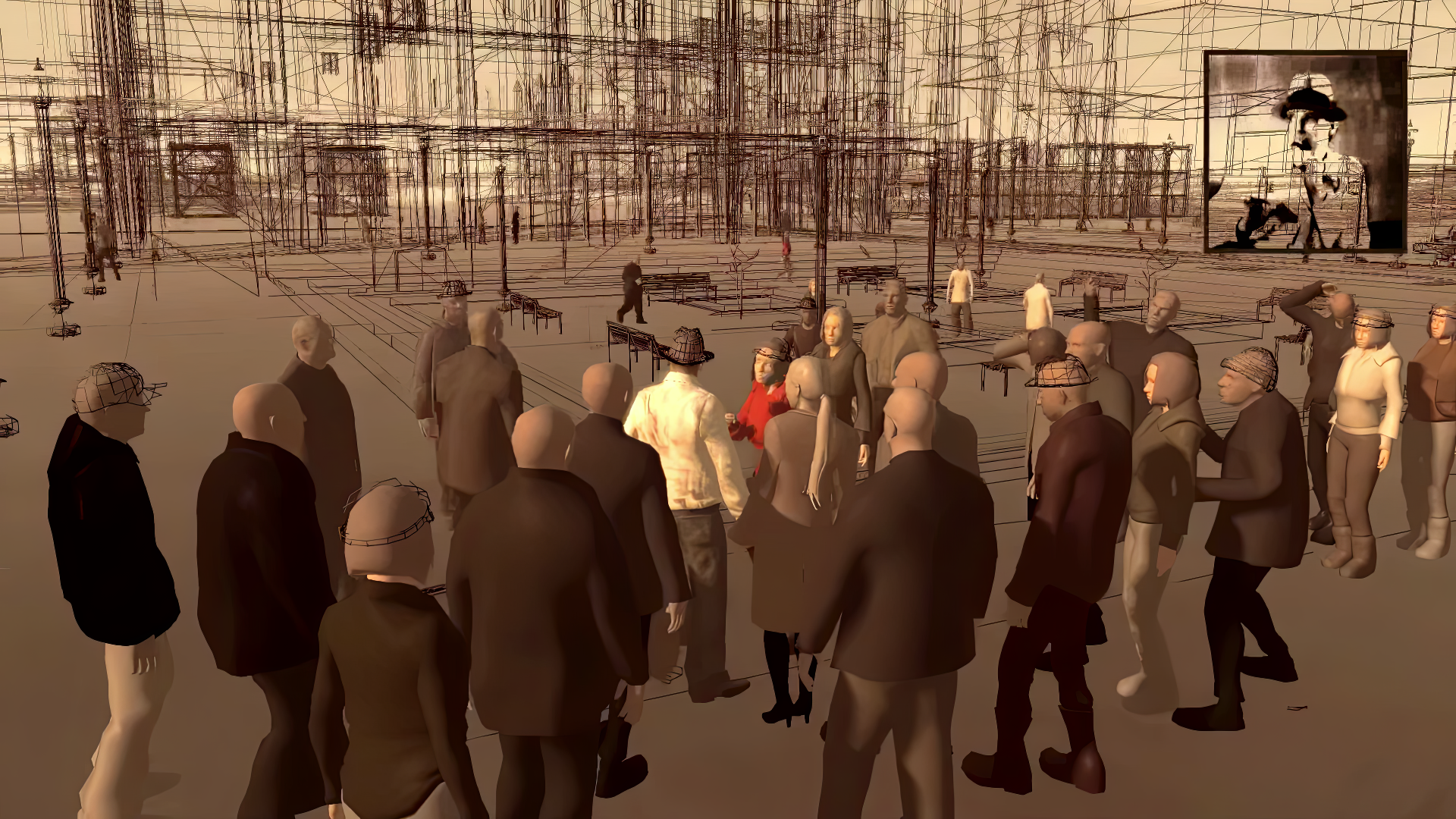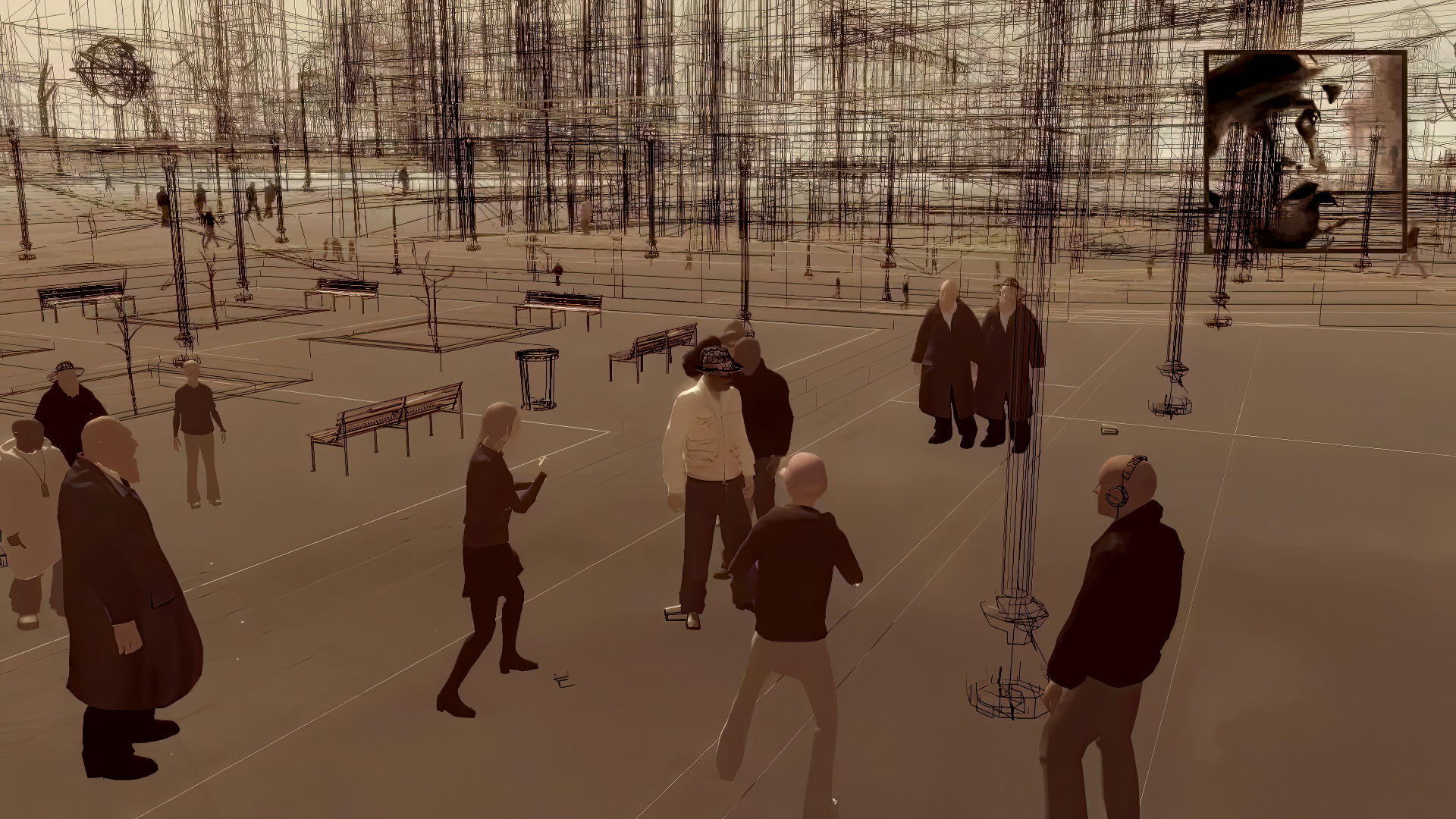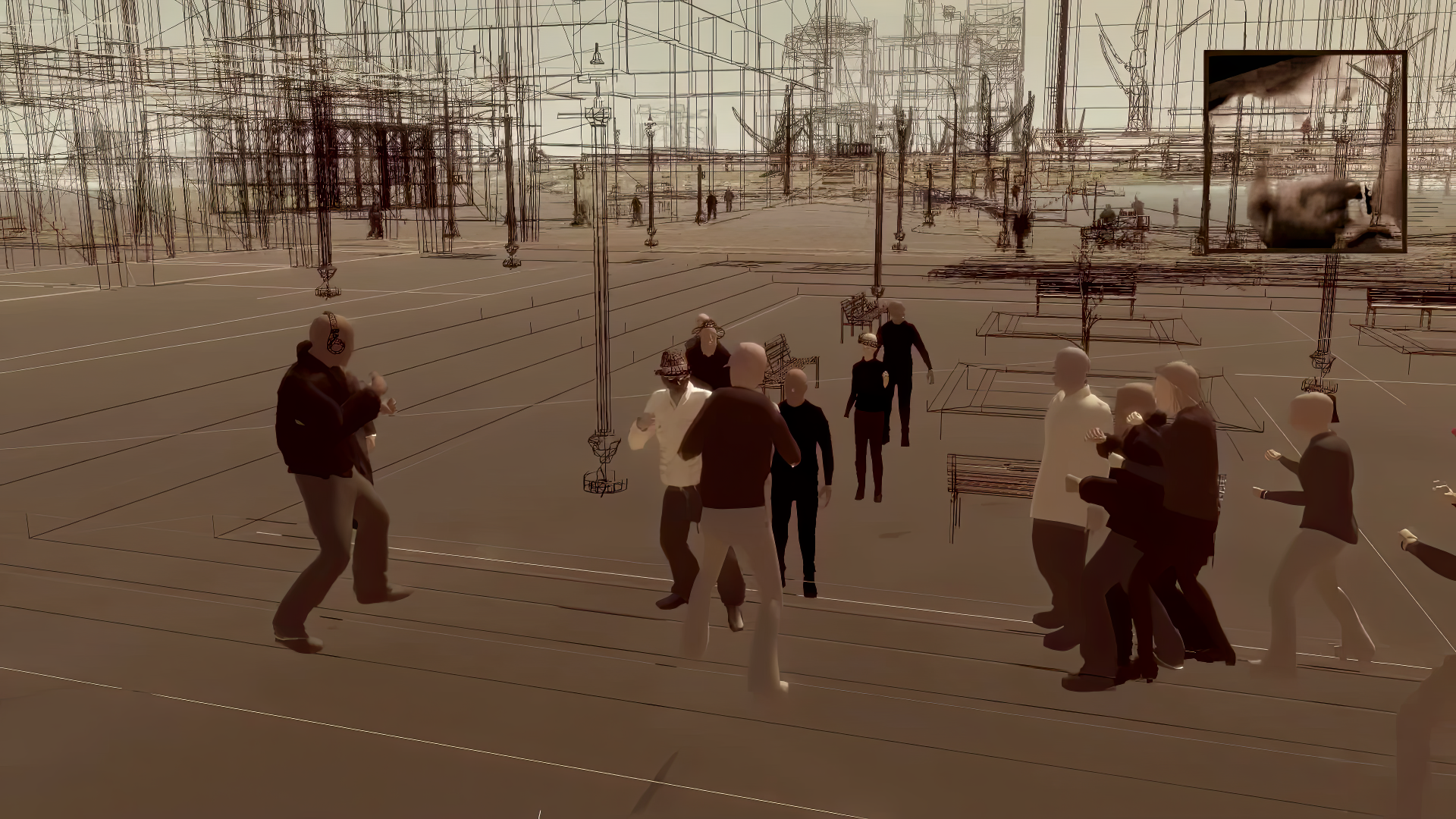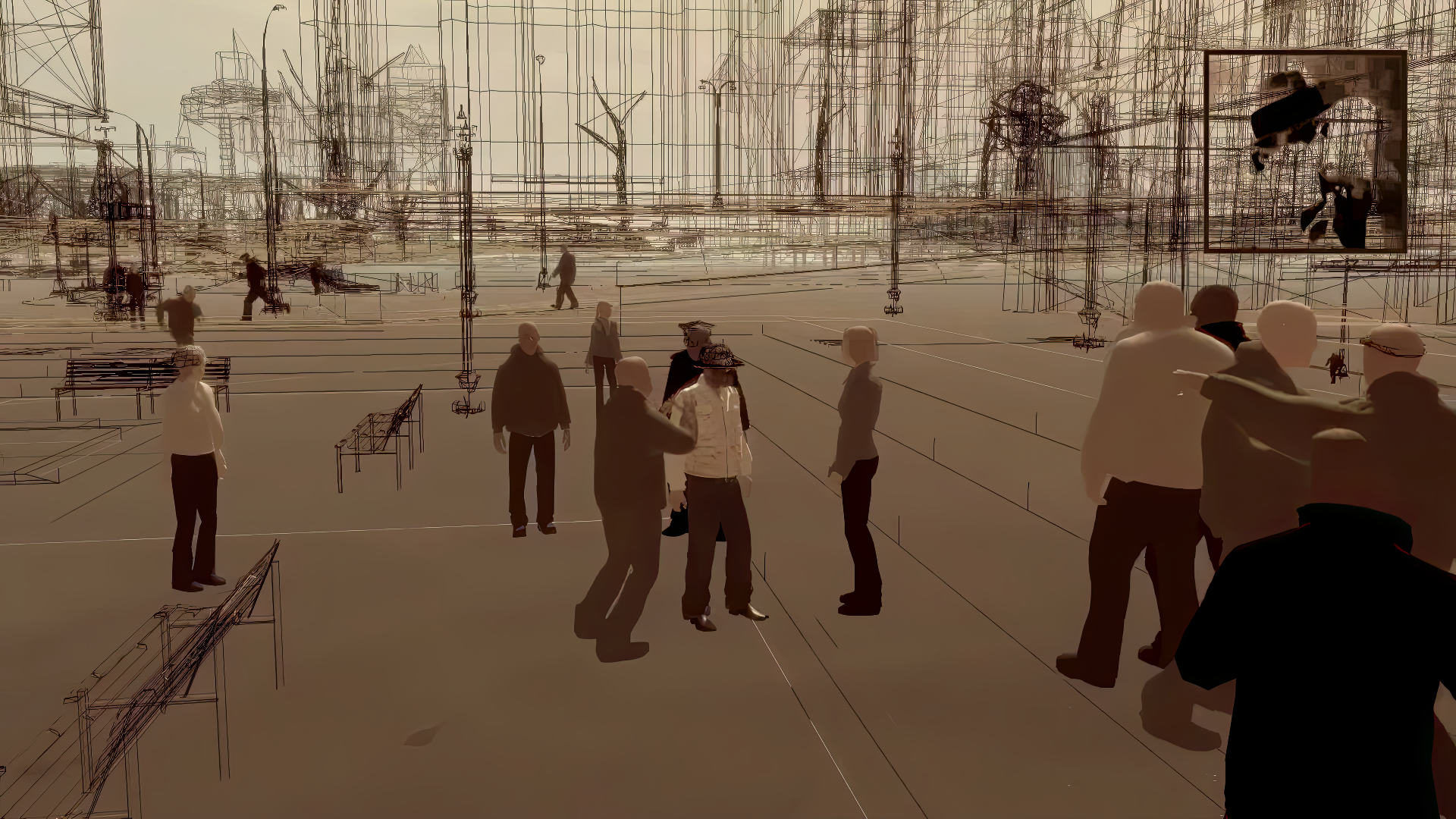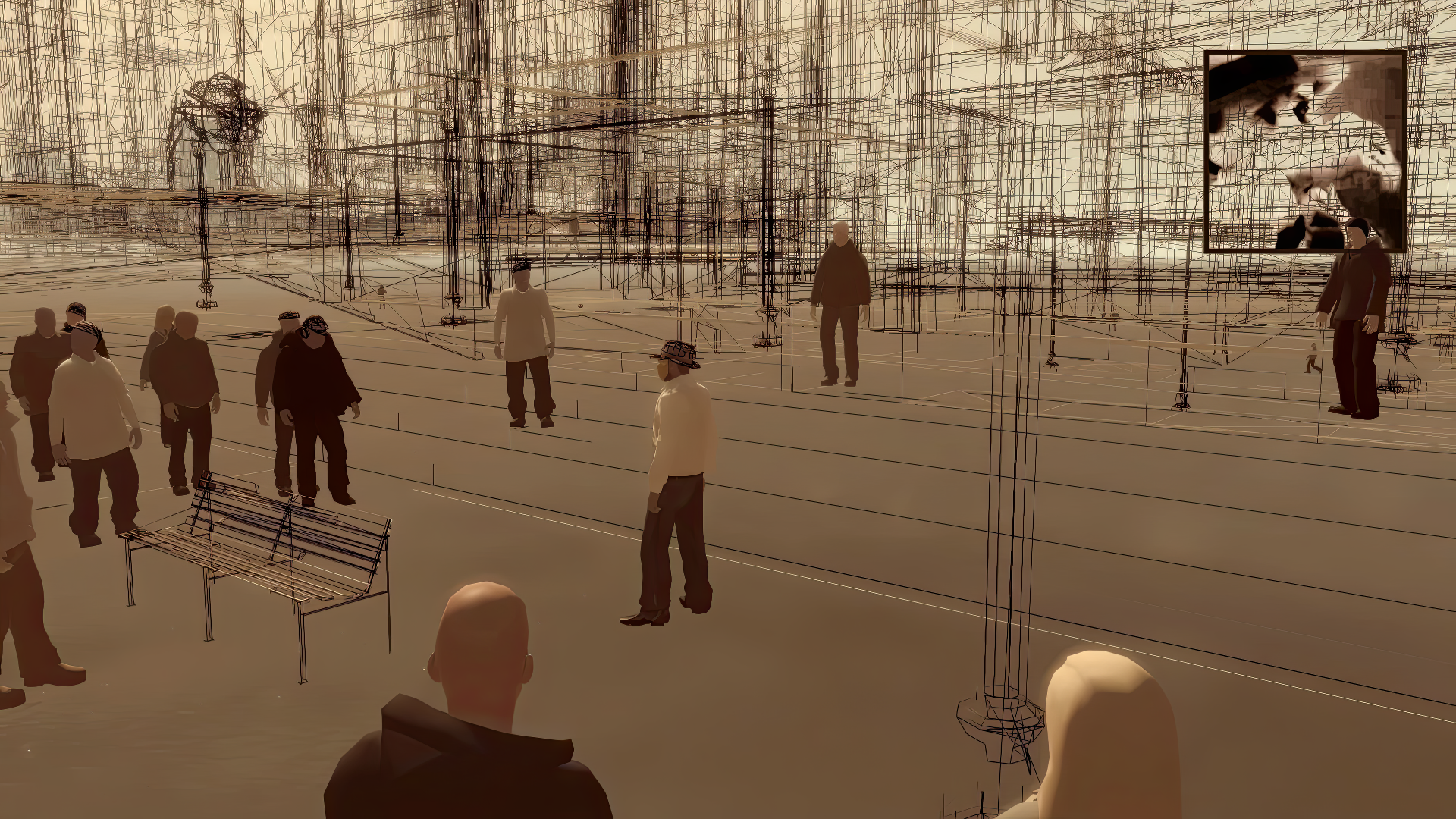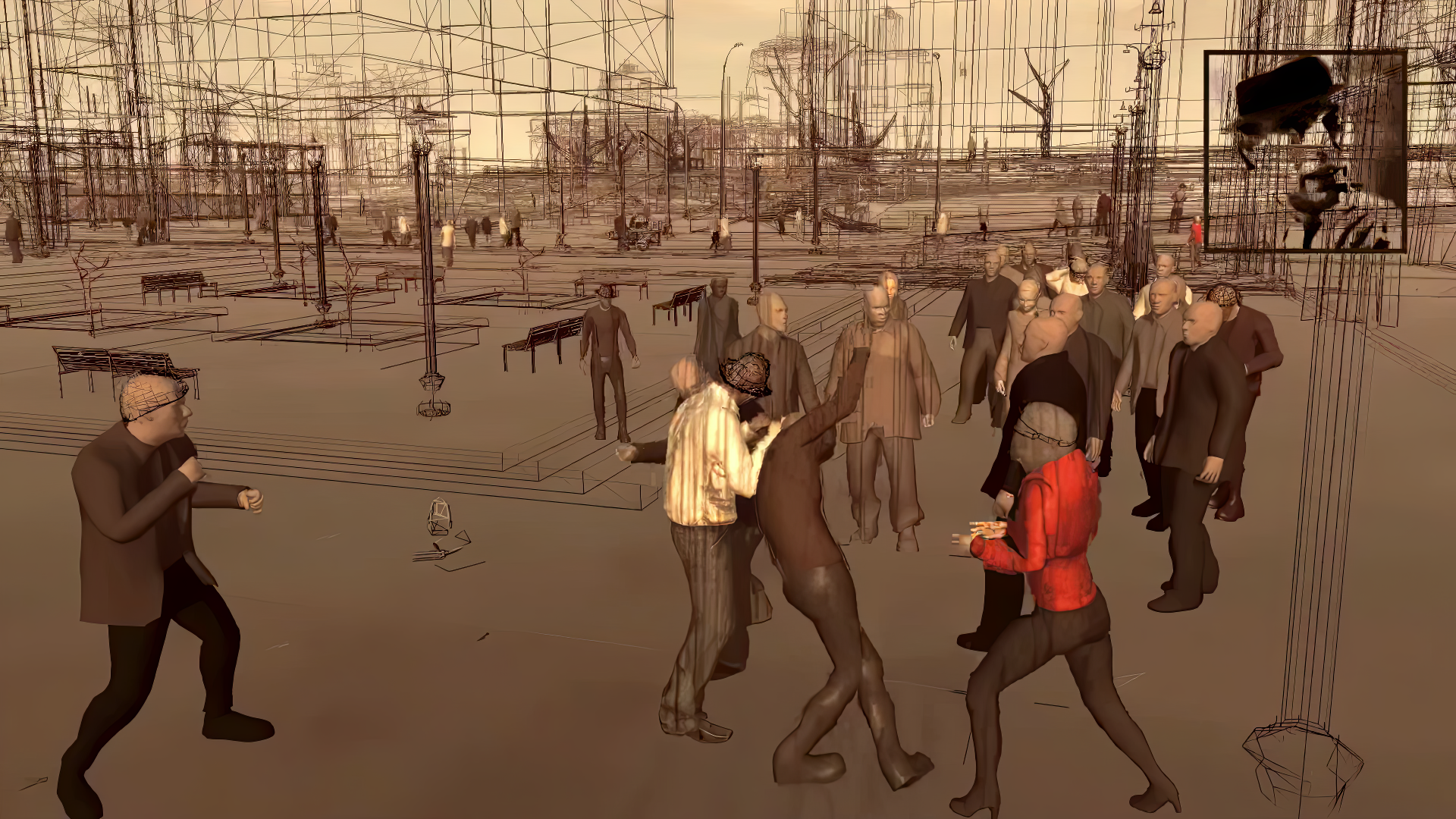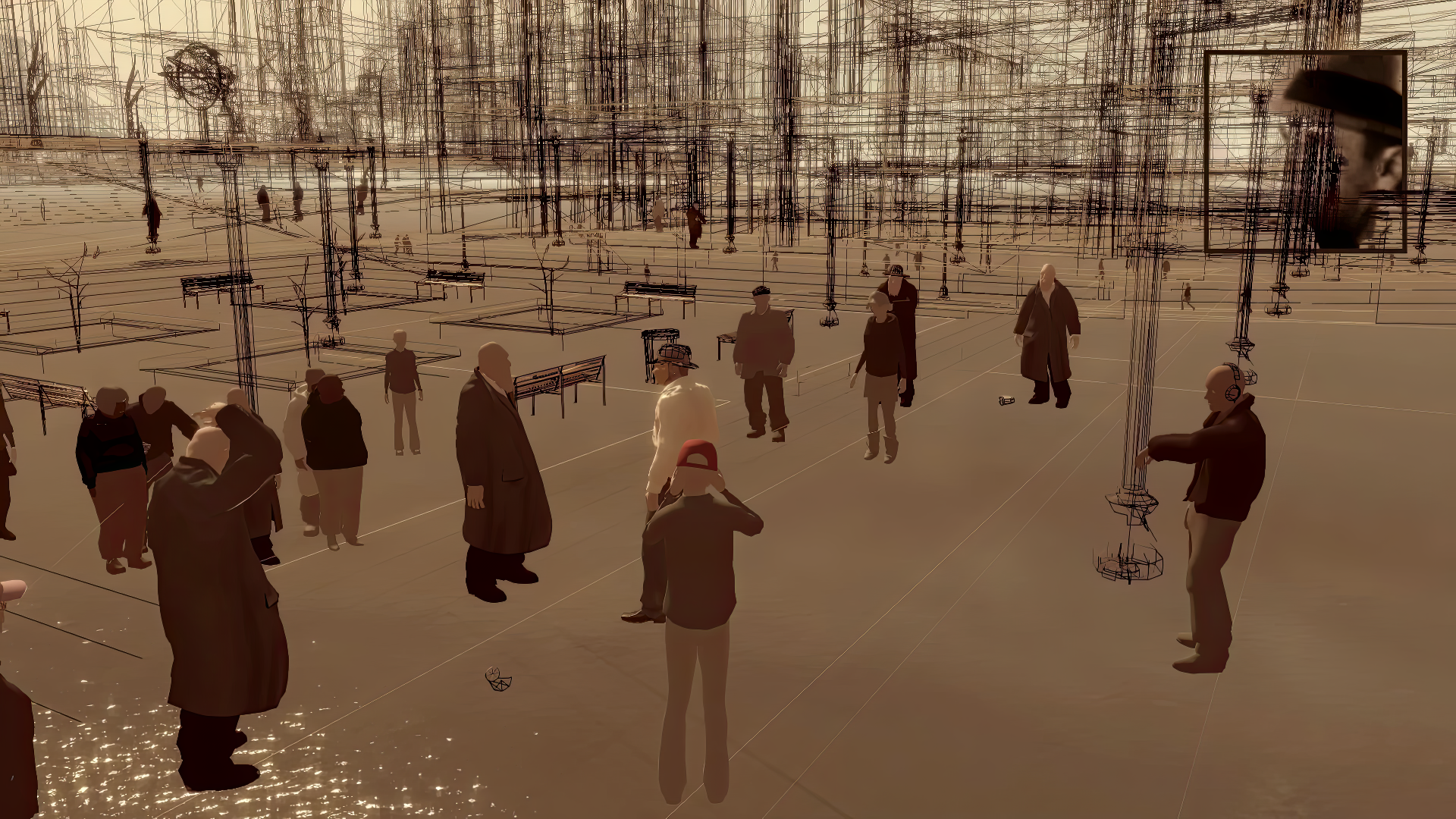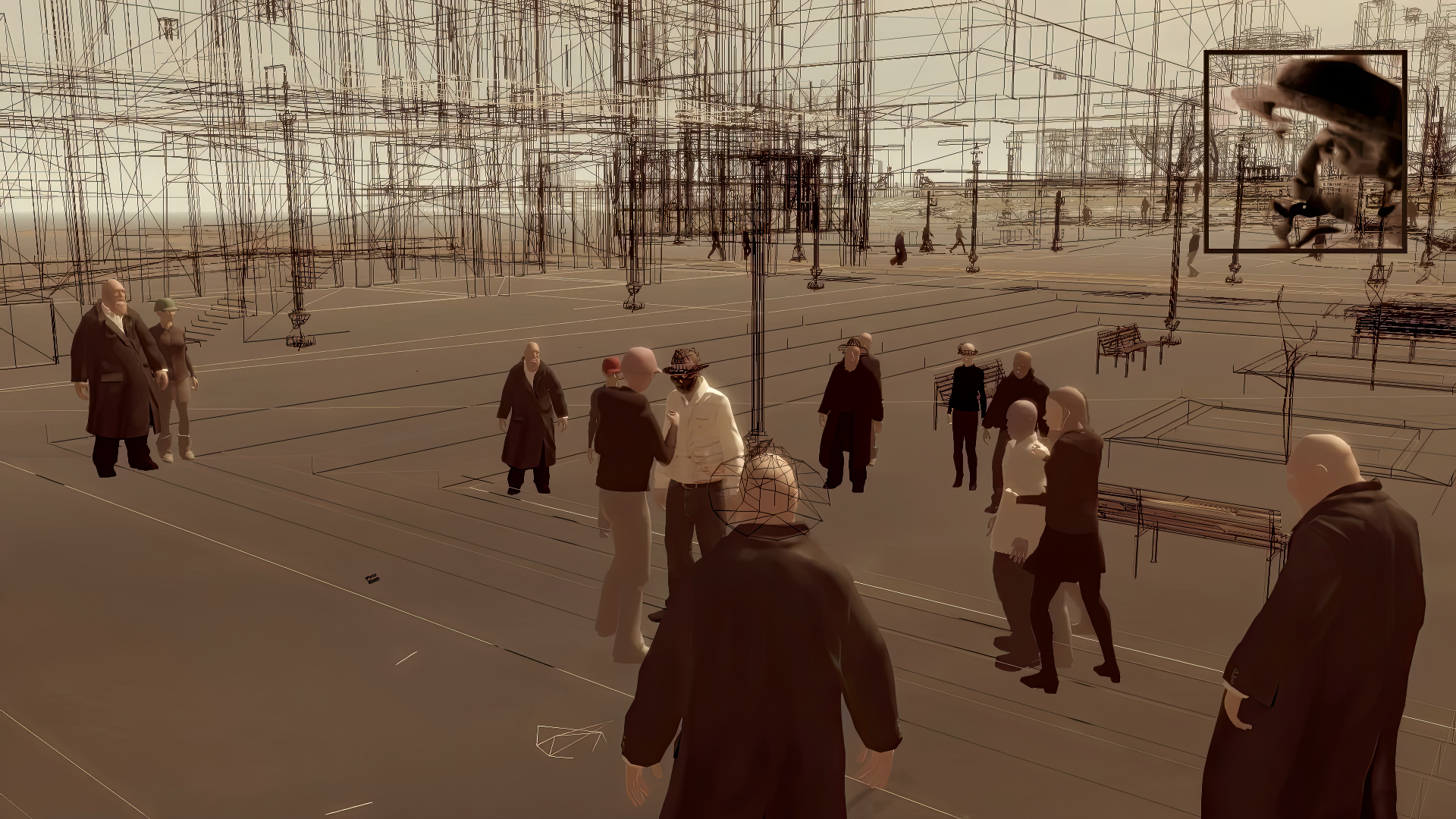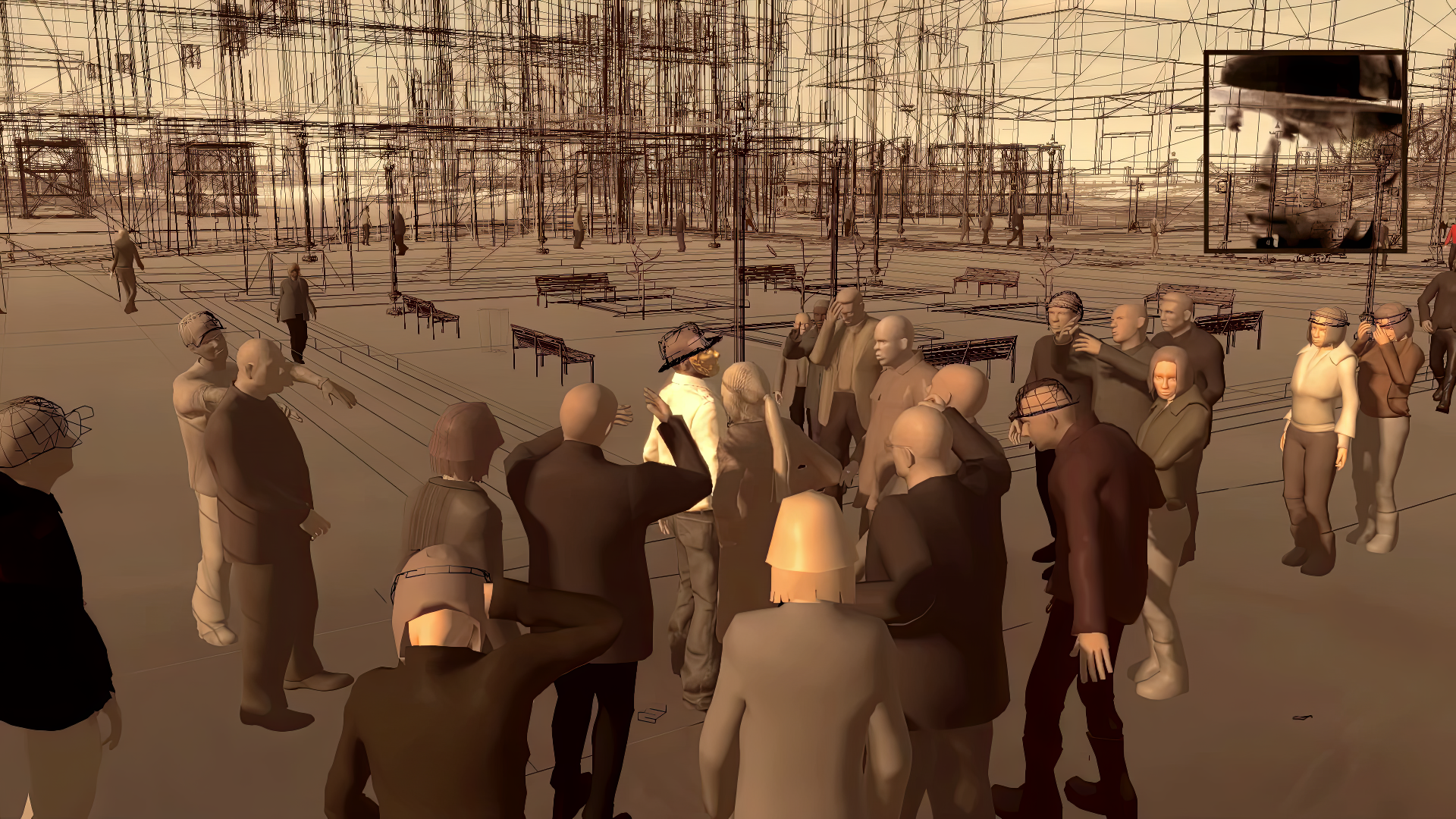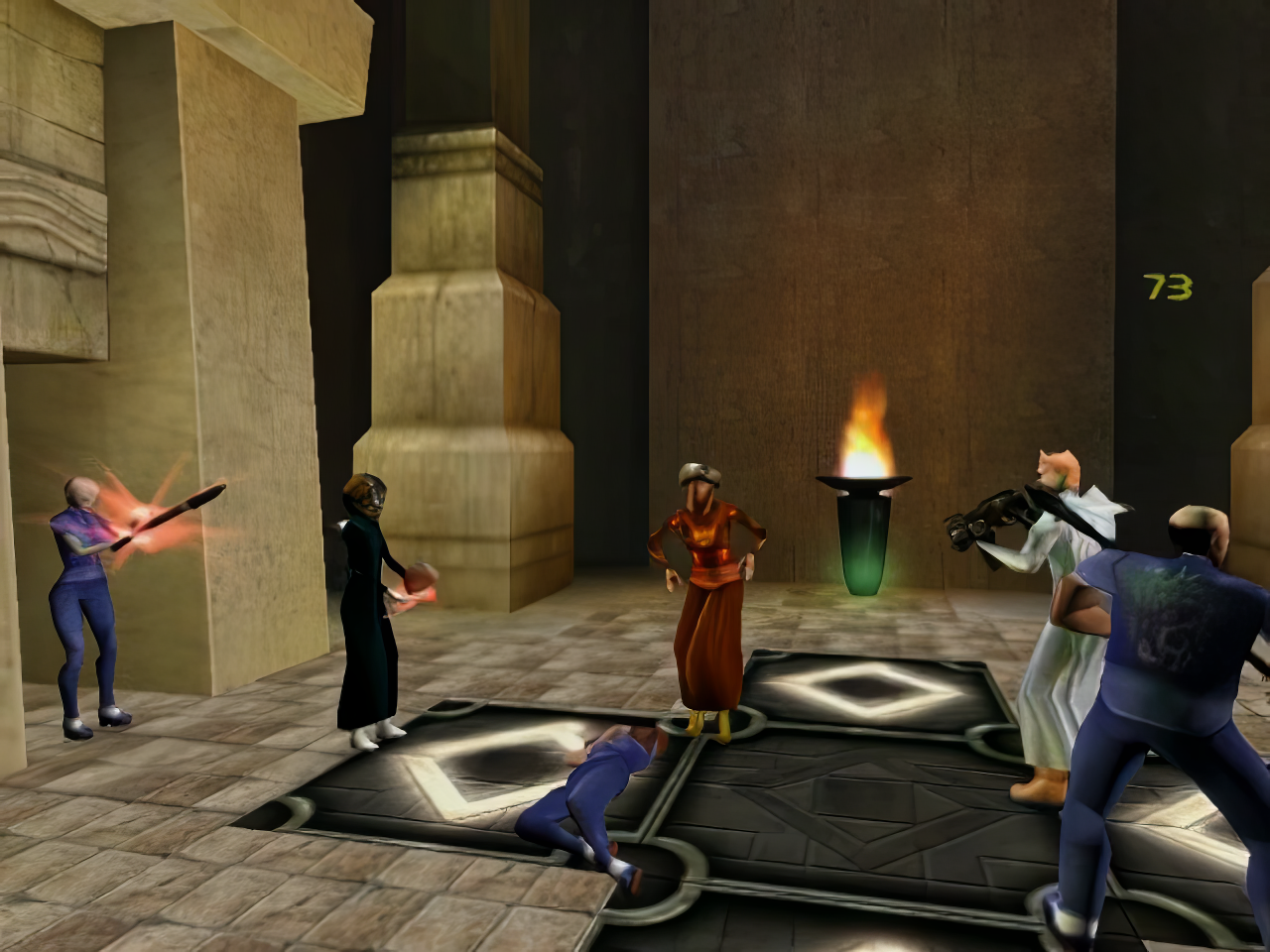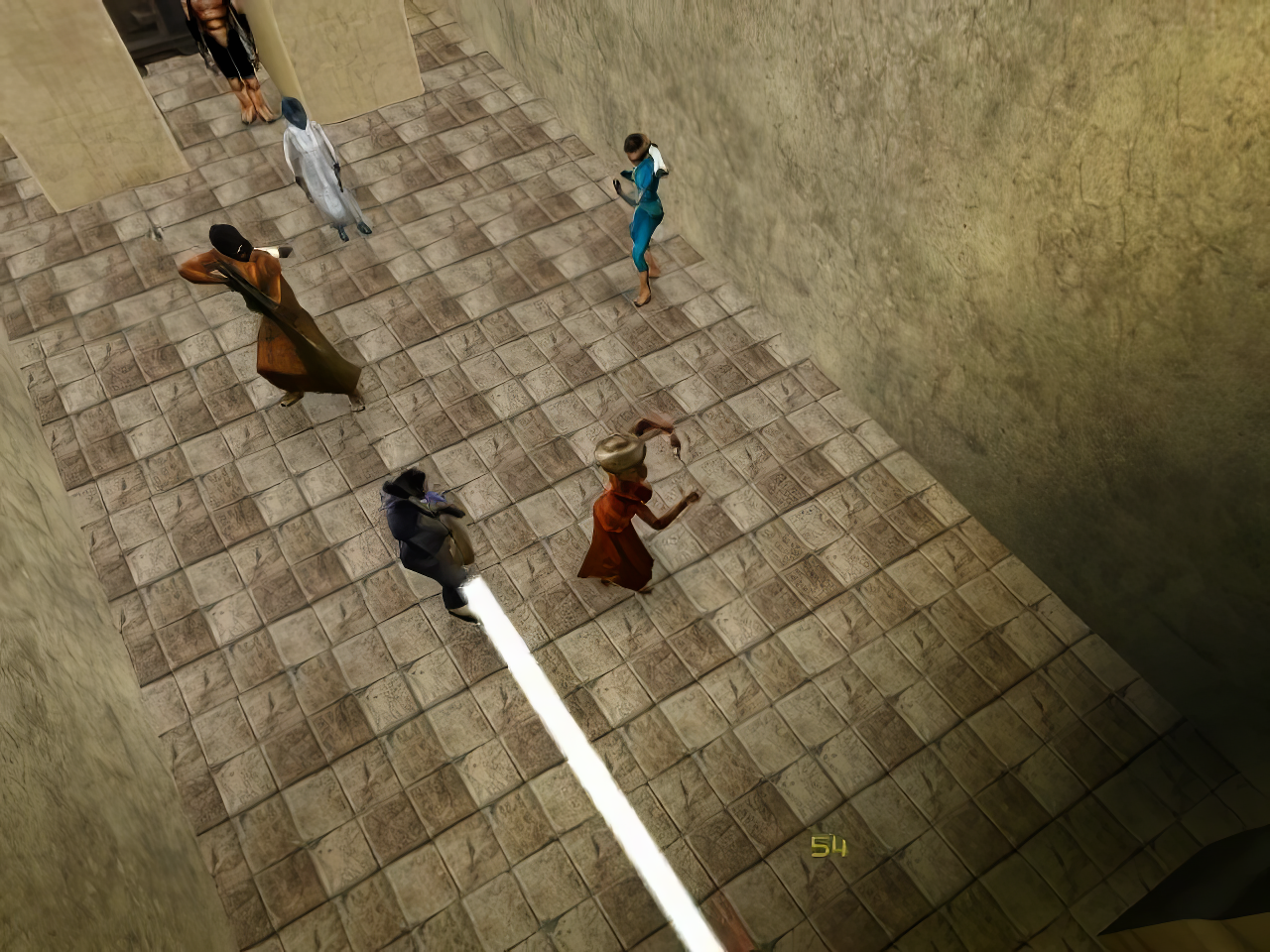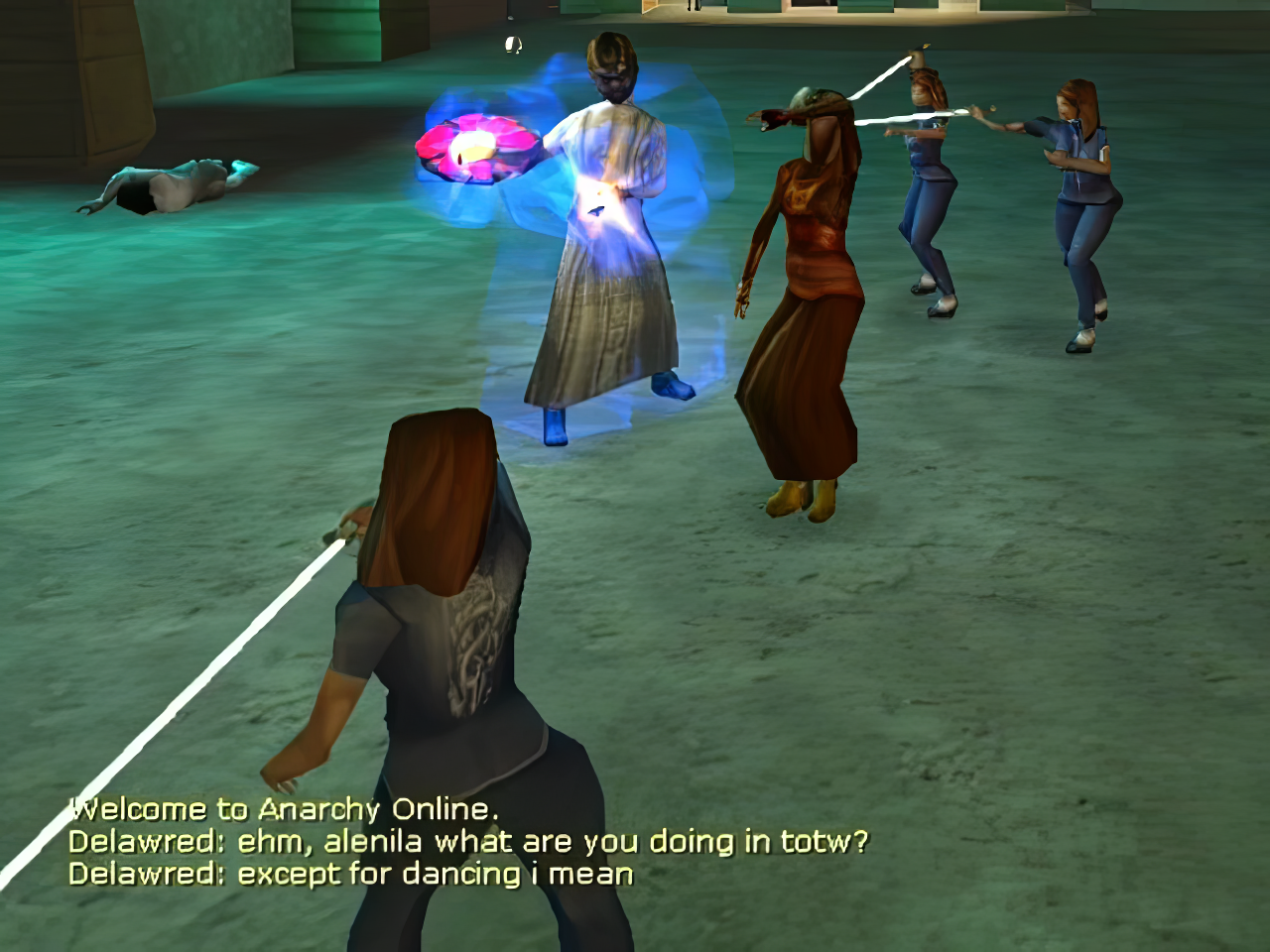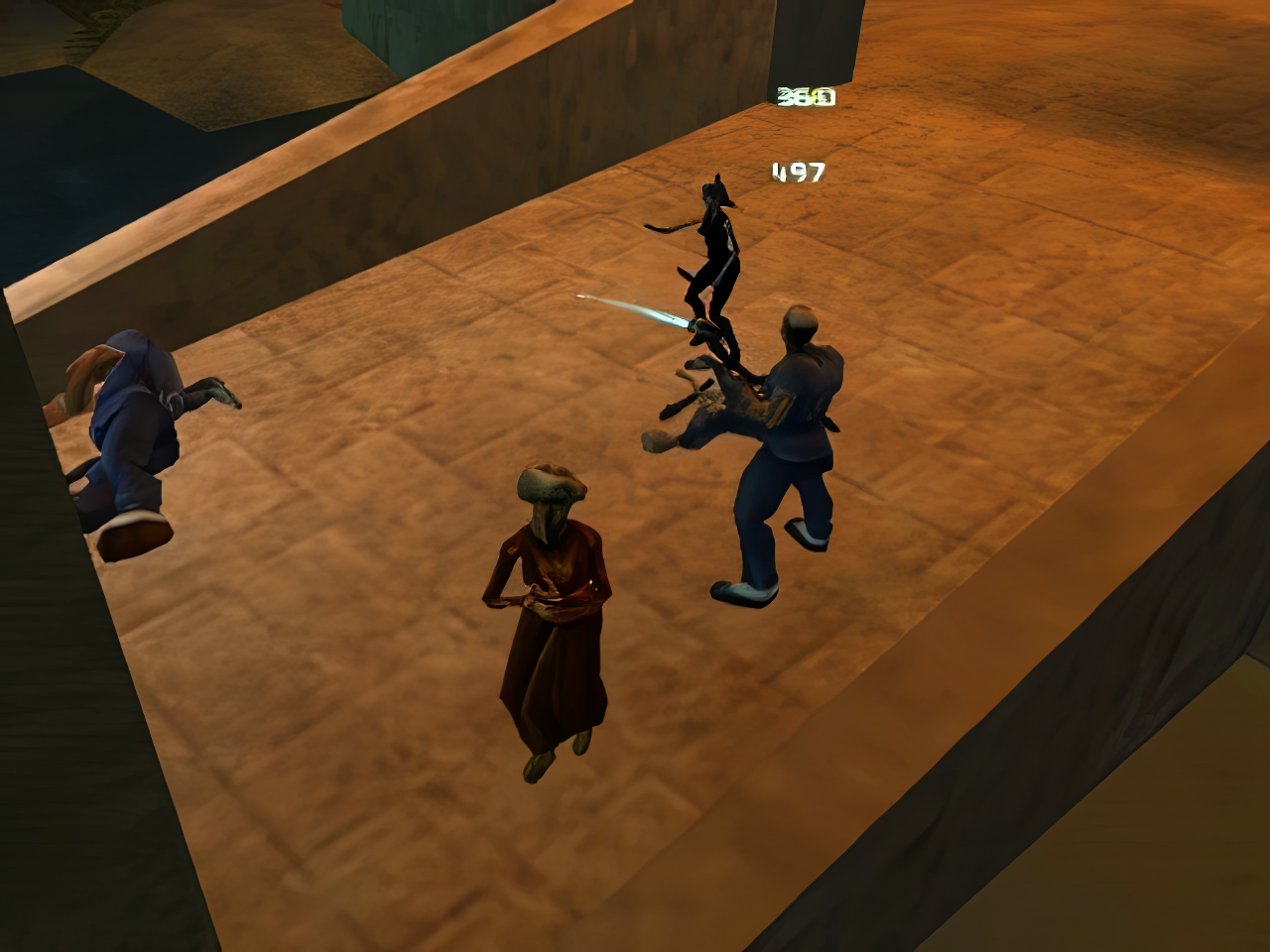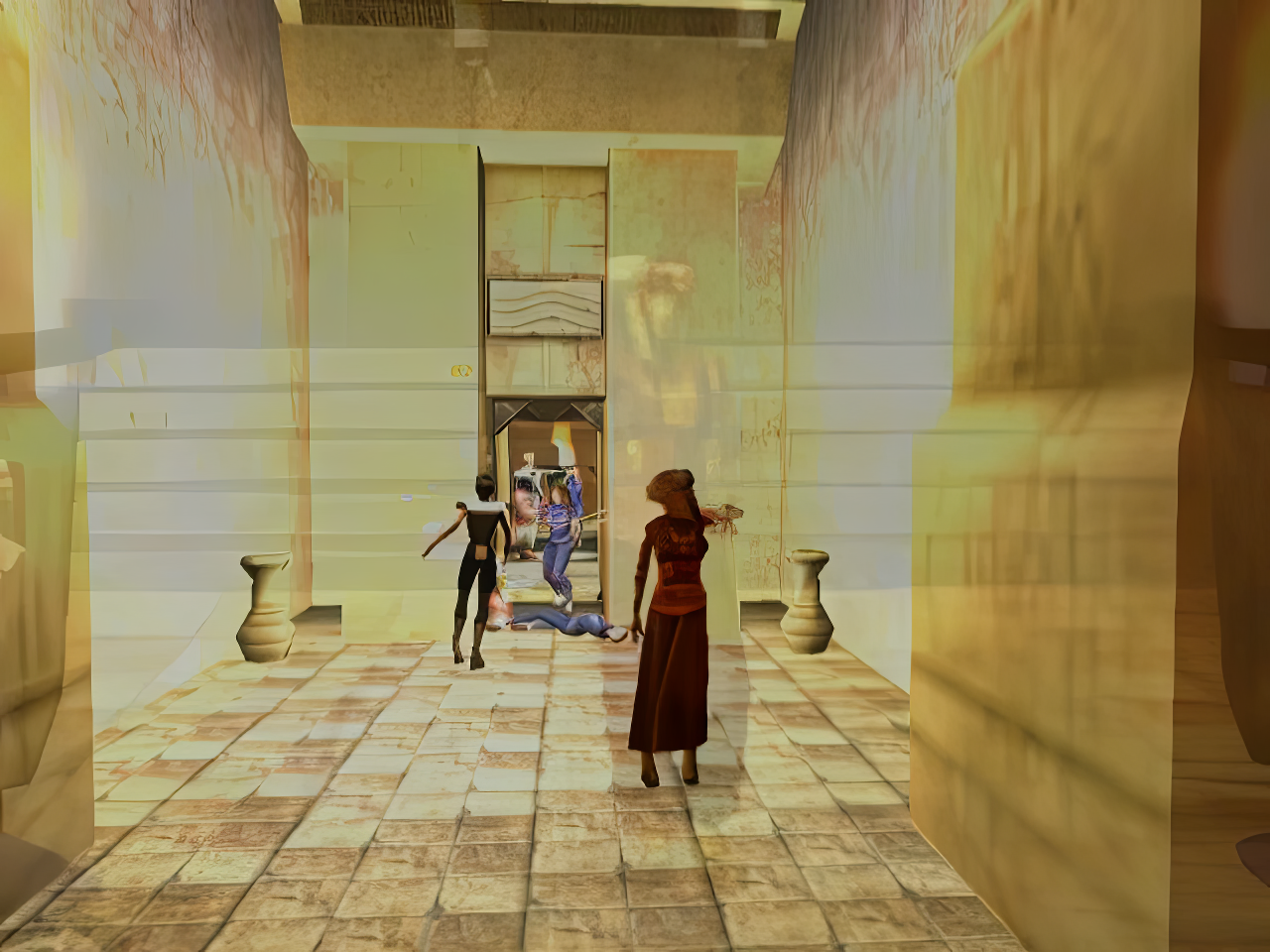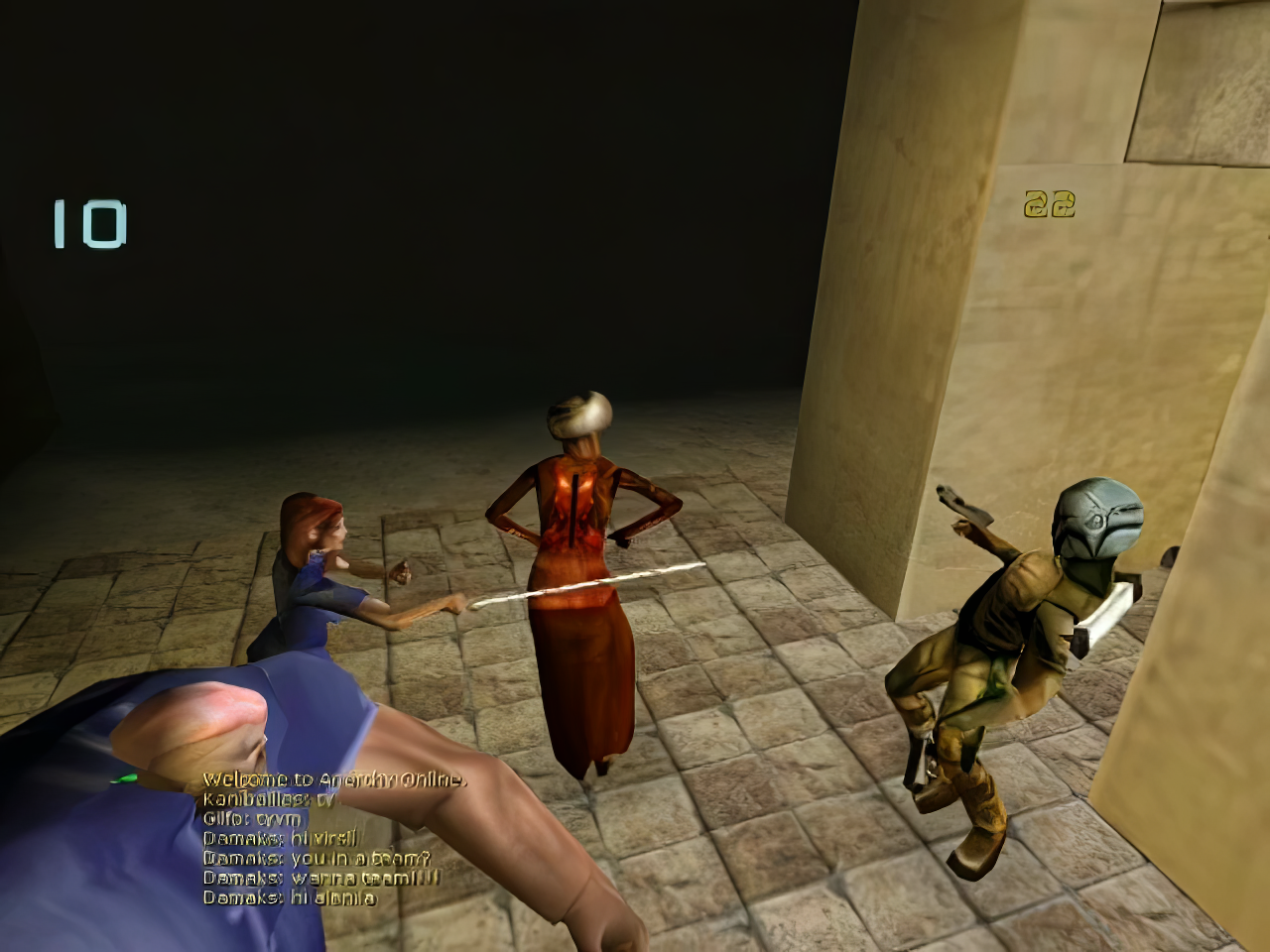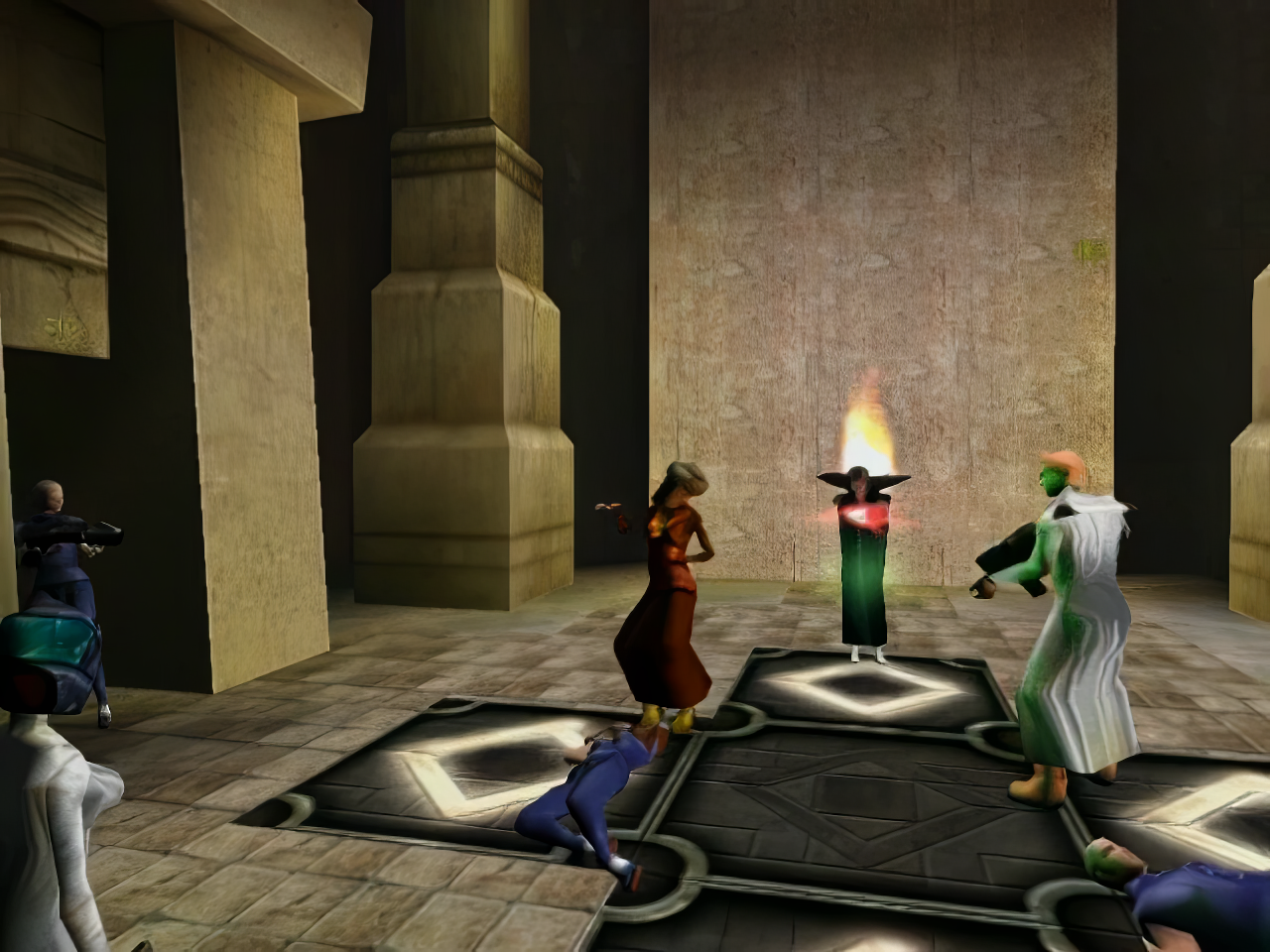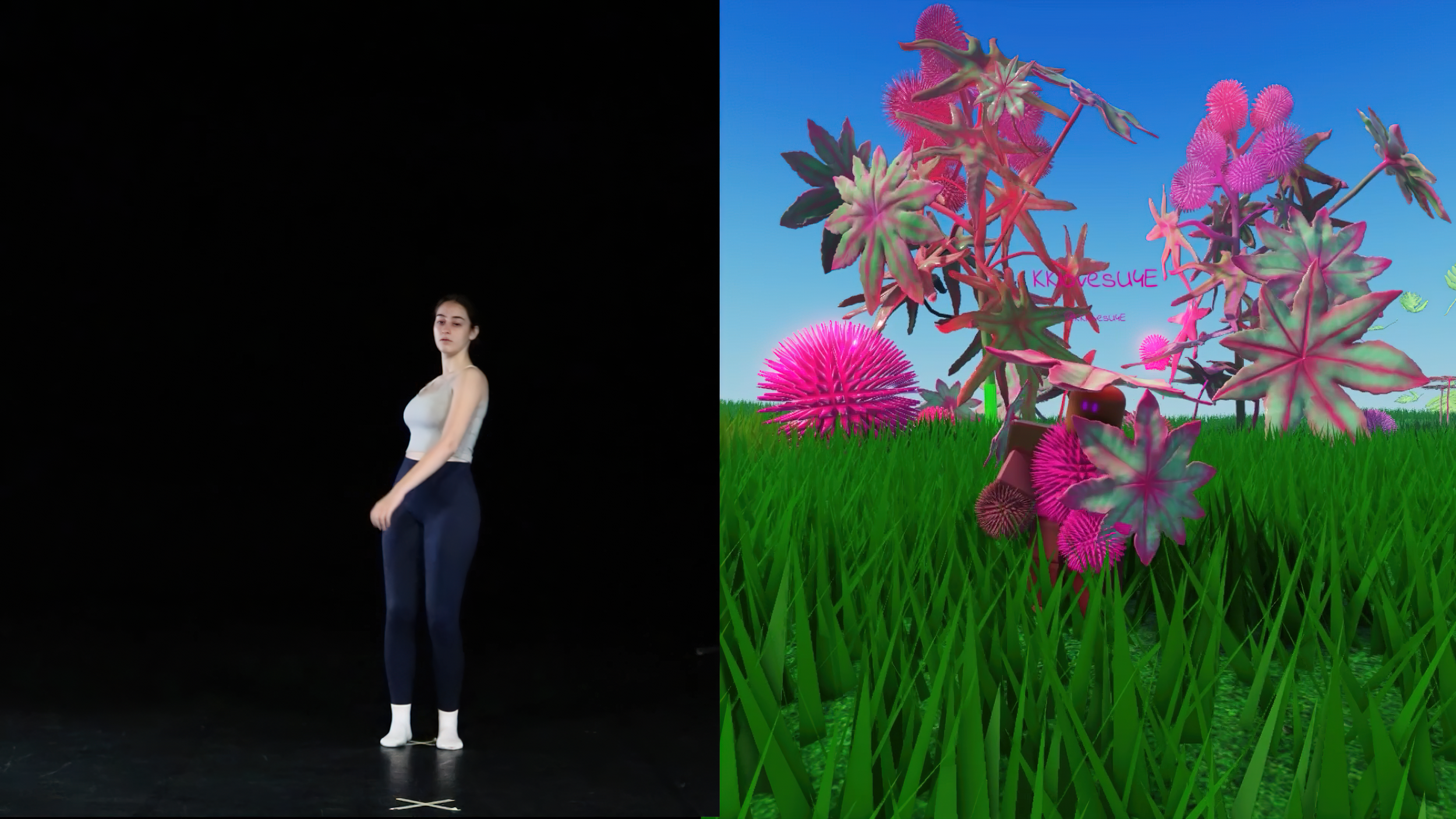VRAL is currently showcasing Parallel V by Hui Wai-Keung, a work that serves both as sequel and homage to Harun Farocki’s Parallel I-IV series (2012-2014). To provide a comprehensive context for this piece, we delve into the artist’s oeuvre, expanding our critical examination with the monumental project Re-Dürer (2016), which was originally presented in the context of the exhibition GAME VIDEO/ART. A SURVEY.
Albrecht Dürer’s iconic early 16th century engravings Knight, Death and the Devil, Melencolia I and Saint Jerome in His Study deftly capture the melancholy temperament then informing the Northern Renaissance zeitgeist. Each work brims with allegorical symbols and objects freighted with shifting meaning across spiritual, philosophical and creative domains. In Knight, Death and the Devil, a stoic rider perseveres past Death and the Devil, communicating fortitude and moral resolve. Melencolia I portrays a winged angel seated pensively amidst tools of science and art, surrounded by mystical geometries hinting at creative aporia. Saint Jerome in His Study shows the scholarly saint reading in a meticulously detailed monastic cell, worldly threats held at bay.
Half a millennium later, the Hong Kong-based interdisciplinary artist Hui Wai-Keung radically reinterpreted this trilogy through the digital medium of video games in his 2016 video installation Re-Dürer. Hui hacked Rockstar Games’s Grand Theft Auto V (2013), disrupting graphics, mechanics and physics to stage complex tableaux which reconfigure themes of morality, creativity, faith, and knowledge within Dürer’s works and adding new layers of meaning, courtesy of Joseph Beuys. Displayed across three channels, Hui’s “reworks” – as he terms them – add a patina of irony and existential absurdity by transposing early modern symbology into the chaotic contemporary milieu of Los Santos, GTA V’s deranged, hyper-realistic urban sandbox.
The jarring juxtaposition of Renaissance sensibility with nihilistic virtuality in Re-Dürer generates cognitive dissonance in the viewer, short-circuiting inherited cultural schema. Are utopian aspirations still viable in worlds increasingly coded and commodified? What becomes of contemplation in spaces defined by endless aggression and appropriation no longer even recognized as such? Hui implies that the 21st century experience offers little safety from the persistent existential threats embodied by Death and the Devil in Dürer’s era. Perhaps only…
Matteo Bittanti
Works cited
Hui Wai-Keung, Re-Dürer, three channel video installation, featuring generated graphics from hacking/modding Grand Theft Auto V, 2016.
This content is exclusive to Patreon subscribers. To gain full access, consider joining our vibrant community.


